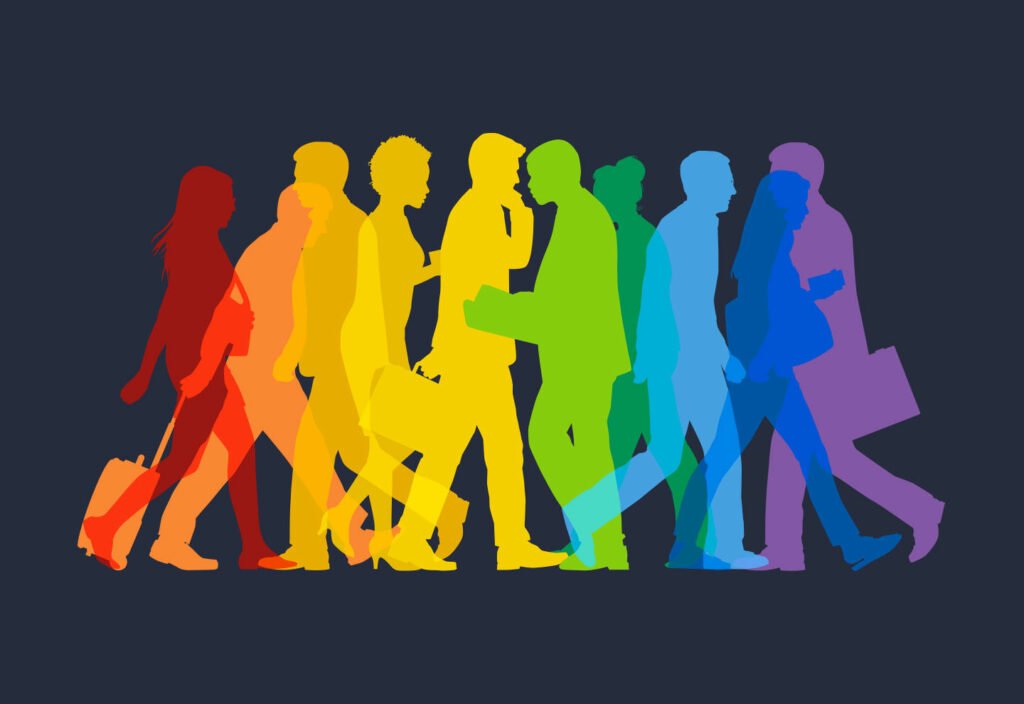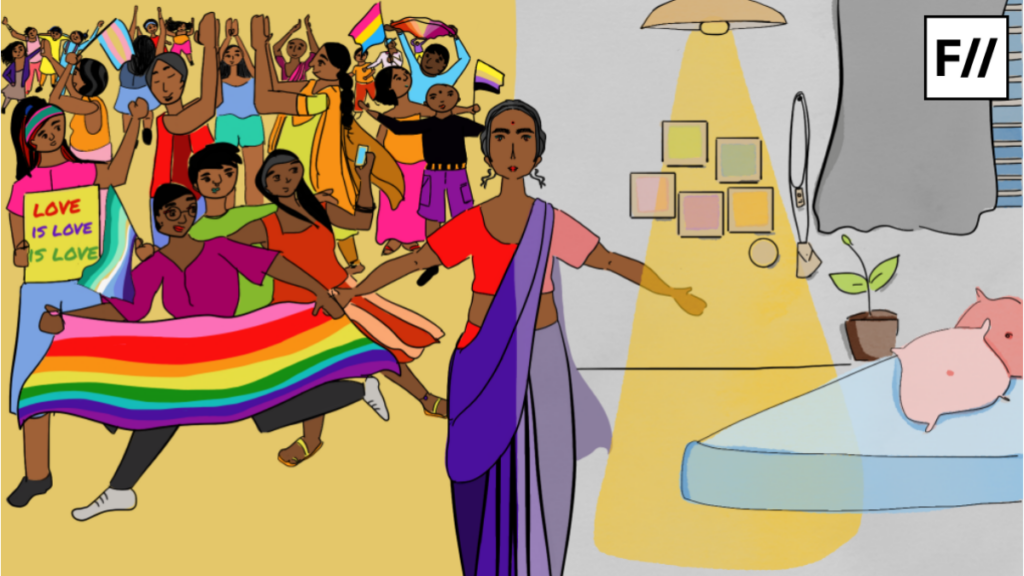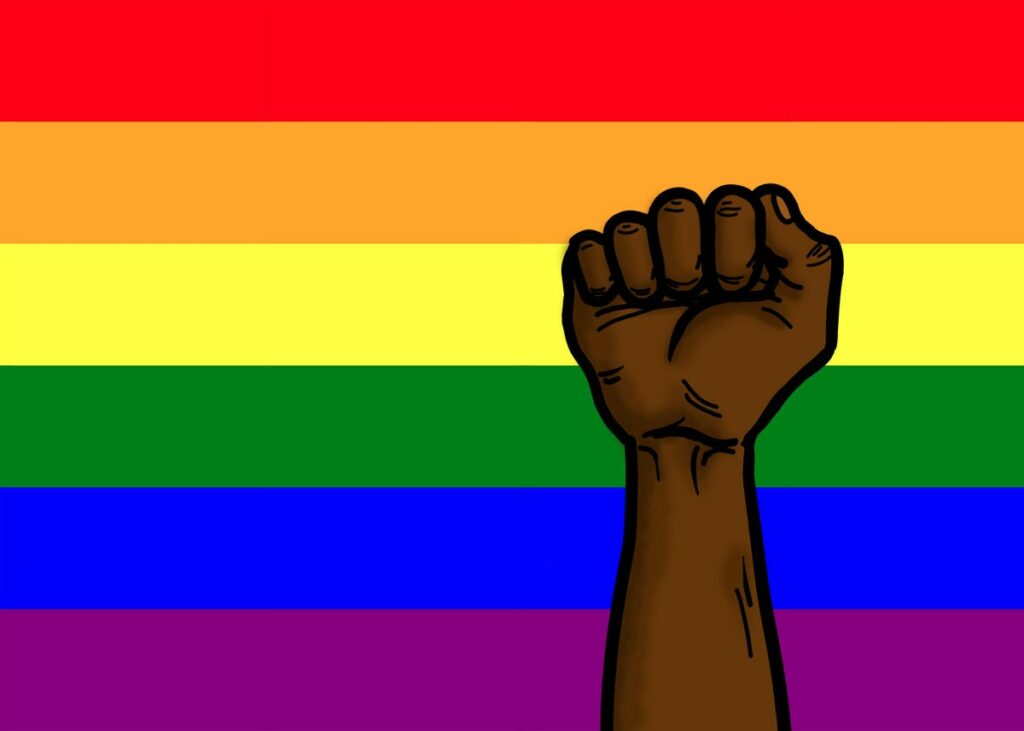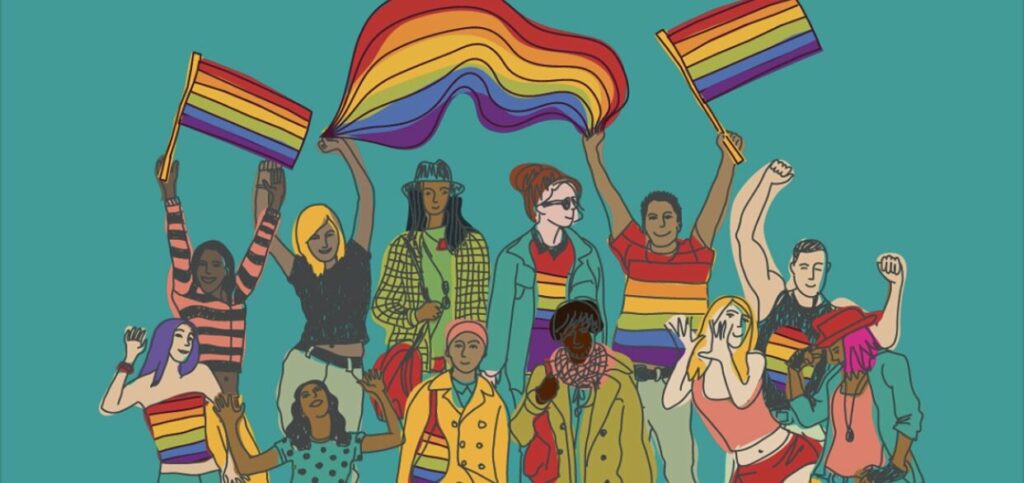Businesses, institutions and workplaces of all sorts aspire to be inclusive of diverse populations, with gender, sexuality, disability, religion, and age being the common axes. This aspiration is beyond what is reflected in the laws- right to leave, maternity benefit, appropriate working hours and gratuity, amongst others. This fosters a reputation of inclusivity and can attract the best employees from all across, irrespective of their identities.
One key group employers want to reach out to through their diversity and inclusion initiatives is gender and sexual minorities, or the LGBTQIA+ community. Thus, policies and bylaws may be in place that prevents discrimination against LGBTQIA+ people. Inclusivity may be proclaimed by digital outreach and having individuals in key management or executive populations -make statements of inclusion and diversity.
“Queer affirmative (QA) therapy is a framework for therapy that affirms queer identities, acknowledges the harm caused due to minority stress, homo and trans negativity, and helps queer individuals to combat the impact of the same. QA Therapists can provide a safe space for queer individuals to discuss and overcome the challenges they face in a largely heteronormative society. Ensuring that the referral network or in-house mental health team within organizations is made up of QA Therapists is a crucial step to ensure the quality of mental health care queer employees receive. In the absence of the same, queer employees of the Organisation with mental health concerns may feel invalidated, further isolated and invisibilised by the people who are supposed to help them, which contributes to further traumatisation and reduced likelihood of accessing necessary support.“
Jagruti Wandrekar (she/her), Queer Mental Health Professional
These look good on the outside, but inclusion in the true sense should run deep and also manifest in subtleties. Workplaces should be more inclusive of the LGBTQIA+ community and here are a few insights, observations and opinions that may help organisations achieve inclusion. This is no exhaustive list, and the goal is to focus on some less-discussed details. There may be many more.
Compile and disseminate information on local queer-friendly resources
Jobs may require people to move from their current city/town to a new one. Moving to a new city can be a lonely and anxiety-provoking experience for anyone. As people from the community consider applying to a company, they will be looking at how queer-friendly the city where the company is based is.

It is true that no one can change the city’s culture overnight, however, one could gather Information on queer affirmative spaces, groups and collectives in the city and mention them on websites. Queer people can find a lot of solace and comfort in the company of each other and form families of choice.
Make celebratory events inclusive, not othering: The workplace politics
The world is not fair to LGBTQIA+ folks. It is a world where marriage, family, adoption, companionship and cohabitation with loved ones are not easy for queer folks. It might be good for the employer and the organisation not to remind them of these challenges. Suppose the organisation has a culture of celebrating the employees’ marriage/ wedding anniversary/baby shower etc. In that case, it might be good to revisit and think of how these events can be inclusive.
The first step can be to make sure that speeches that are made at these events (if any) are not restricted to cisgender heterosexual unions. Make sure not to make any discriminatory or othering remarks against people who are single and/or without a child, by choice or otherwise. Do not adopt an attitude that indicates that married folks in heterosexual unions are more valued than single individuals or those in queer relationships.
The first step can be to make sure that speeches that are made at these events (if any) are not restricted to cisgender heterosexual unions. Make sure not to make any discriminatory or othering remarks against people who are single and/or without a child, by choice or otherwise. Do not adopt an attitude that indicates that married folks in heterosexual unions are more valued than single individuals or those in queer relationships. Charmingly greeting and engaging with a cis-het couple at common lunches and dinners in ways someone would not talk and greet a single person is noticeable. A second step can be to think of ways to celebrate queer unions as well, of course, only when a queer couple in the organisation may wish so.
Ensure queer-affirmative psychological support
There is a well-known theory (Meyer’s Minority Stress framework) in psychology that postulates that minority groups like the LGBTQIA+ experience stress due to discrimination, rejection, judgements, and bullying that is directed towards them. This can affect their health, especially mental health.
Also Read: Why Language Plays A Crucial Role In Gender Inclusion At The Workplace
Overall, LGBTQIA+ individuals show higher rates of mental health concerns than what is prevalent in the general population. On top of this, workplaces can be competitive in ways that provoke insecurity and induce stress. Mental health support for employees, including queer employees, is therefore necessary.

When it comes to queer people, any mental health support provided to queer folks must be by queer affirmative mental health practitioners who understand the struggles of a minority community. Jagruti Wandrekar (she/her), queer mental health professional says ‘Queer affirmative (QA) therapy is a framework for therapy that affirms queer identities, acknowledges the harm caused due to minority stress, homo and trans negativity, and helps queer individuals to combat the impact of the same. QA Therapists can provide a safe space for queer individuals to discuss and overcome the challenges they face in a largely heteronormative society. Ensuring that the referral network or in-house mental health team within organizations is made up of QA Therapists is a crucial step to ensure the quality of mental health care queer employees receive. In the absence of the same, queer employees of the Organisation with mental health concerns may feel invalidated, further isolated and invisibilised by the people who are supposed to help them, which contributes to further traumatisation and reduced likelihood of accessing necessary support.’
Organise training sessions with external community experts
A healthy, positive and safe work environment helps bring out the best in an employee. The employer may be well-informed and well-intended, but this may be different for others in the organisation. Therefore, training and sensitisation workshops are relevant. Some may even argue that the sensitisation approach is better and more effective than stringent policies on inclusion. One can always mandate these workshops and collect anonymous feedback from the attendees to identify areas of improvement.
Also Read: Workplace Harassment And Desensitisation Of Sexist Behaviour In Newsrooms
Avoid projecting preconceived notions against an individual and try to attend, reassure, and validate. Resist the temptation to jump into problem-solving mode when the employee wants a non-judgemental ear. It is important to make the employer realise that people and their well-being matter to your organisation. The line manager mustn’t be insensitive to the struggles a queer person may face. A homophobic or transphobic boss is the last thing one may want, and the resulting experience can be devastating for the employee.
Remember that it is not ideal that people who do not identify with the community conduct these workshops where they are talking about someone else’s lived realities. This shows that someone else is taking the space of the community. However, it is also not ideal that these trainings are left entirely to the community members of the organisation. This can be a huge burden and uncomfortable for people who do not wish to discuss their struggles publicly. There may also be some very intrusive questions directed at the resource person for these workshops. The preferred circumstances may be where someone from the community but external to the organisation conducts these sessions and ensures fair honorarium and payment to the resource person.
Develop sensitive leaders: The need of the hour for workplace inclusion
Challenges in one’s personal and professional life can affect work performance. One may miss a deadline, may want to avail a leave at a critical project time or be unable to get along with professional expectations. Employees may share their problems with their line manager. Sharing these problems is revealing one’s vulnerabilities. The leader of the organisation must always listen carefully while their employees share personal/professional problems. Avoid projecting preconceived notions against an individual and try to attend, reassure, and validate. Resist the temptation to jump into problem-solving mode when the employee wants a non-judgemental ear. It is important to make the employer realise that people and their well-being matter to your organisation. The line manager mustn’t be insensitive to the struggles a queer person may face. A homophobic or transphobic boss is the last thing one may want, and the resulting experience can be devastating for the employee.

Dia, a 28-year-old non-binary person working in the development sector in a tier 2 city, shared, “I felt uncomfortable in my workplace because I could not let others know my gender identity and had to wear clothes that I do not like. The project was working for and with transgender persons, but none of the staff knew gender identities and expressions that are non-binary, genderqueer, agender, etc. My supervisor also used to share transphobic comments to me in person without knowing the fact that I am a queer person myself.”
Also Read: Are Indian Workplaces Gender-Inclusive? Wage Gap, Maternity Leave, Toilets—They Lack Them All
Highlighting the gatekeeping they experienced, Joe, a 25-year-old queer person, shared, “we work on multiple projects focused on trans and queer issues. One of the mottos our organisation uses is that lived experience is an expertise yet often when I express interest in a project, my supervisor tells me that I don’t have a Master’s degree!”
These statements reveal insensitivity towards queer and trans people from leaders who actually work on queer and trans issues. As an organisation, you may want to hold the leaders more accountable than others. You may also ensure fair representation of gender and sexuality when it comes to leadership so that employees can speak with the people they are most comfortable talking to.
Be mindful of the ‘Q’
Not all queer folks are out or comfortable talking about their identity. Some are selectively out to people whom they trust. Some are questioning and may not have shared their identity with anyone. It is essential to be mindful of this. When you want an opinion on an LGBTQIA+ issue, make sure that people can also express their views anonymously. Do not assume anybody’s identity, and do not reveal or out someone if they have chosen to come out to you. It is essential to keep this in mind while recruiting and in workplace conversations. Do not insist on people sharing their sexuality, gender identity and relationship status. If someone dodges a discussion on the gender of their loved one or their celebrity crush, do not probe or gossip about it. Let them be.

Conversely, if the organisation has employees who are open about being LGBTQIA+ in the workplace do not insist on parading the same individual(s) at meetings and diversity conferences to flaunt the organisation’s inclusivity unless they are genuinely willing to do so. Through ongoing recruitment and retention practices, ensure they are not the only LGBTQIA+ employee in the workplace – being the only one can feel isolating and tokenistic.
The author acknowledges and thanks L. Ramakrishnan for their input on this piece and Jagruti Wandrekar and Shruti Chakravarty for their support and encouragement.
Identities of queer and trans employees quoted in this article have been pseudonymised.




